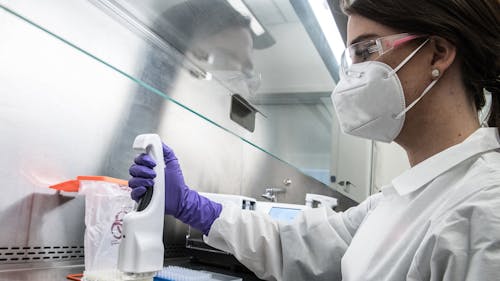Rutgers researchers use roundworms in new study to uncover potential cause of neurodegenerative diseases

Rutgers researchers are using roundworms in a new study to explore the possible genetic markers that lead to neurodegenerative diseases like Alzheimer's, according to a press release.
Inna Nikonorova, a postdoctoral researcher in the Department of Genetics and lead author of the study, is studying roundworm vesicles, which are small sacs that transport genetic information between cells.
Nikonorova said that since these vesicle pathways are evolutionarily similar to those in humans, researchers would be able to use the roundworm data to formulate a hypothesis about the genetic markers in humans.
“We think that Alzheimer’s is an accumulation of some cellular material between the neurons, so we think that the carriers of these cellular materials are not reaching their destination or somehow this process in transferring this cellular material across the cells is not functioning well,” she said.
She said that this incorrect exchange of information will cause the problems that are seen within the brain of an Alzheimer's patient and could also lead to the regressive pathology that is often observed in neurodegenerative diseases.
Maureen Barr, a professor in the Department of Genetics and another author of the study, said that the study was unique and thus involved a lot of risks but could potentially yield important results.
“The idea is that the nervous system uses these extracellular vesicles as a way to communicate,” she said. “In neurodegenerative diseases, that communication gets messed up.”
Nikonorova said that studying vesicles is important because the molecules within them that control the signaling of information, like RNA and membrane proteins, are sent between cells in high concentrations without being diluted, which demonstrates their importance in cell function.
In addition, examining vesicles is also an efficient way of studying the signaling molecules that are meant to target specific functions in other cells because they are enclosed and can be separated from other parts of the roundworm, she said.
If the research is able to expose the reason for the vesicle production, the target destination and what cells might lack the correct receptors, then the full scope of the molecular issue could be identified, Nikonorova said.
“If you know which genes regulate … production of these vesicles and if you know that in Alzheimer’s this process goes wrong, with genome sequencing and personalized medicine … we can make predictions on what diseases you are susceptible to,” Nikonorova said.
She said that if researchers are able to find biomarkers for neurodegenerative diseases, early intervention might be possible, which in turn would allow for earlier diagnosis and better care for patients.
Nikonorova said she decided to use roundworms to study these vesicles both because they have homologous structures to humans and she can produce plenty of vesicles by breeding them in the lab. In designing the study, she noted that there was an issue with separating the vesicles created by bacteria from the vesicles created by roundworms.
To mitigate the problem, she designed a protocol where the two different vesicle groups could be separated, and the lab could isolate the purest possible sample in order to accurately study the proteins within the roundworms, she said.
Nikonorova said that the team isolated more proteins than they had expected, which revealed that there were many types of vesicles. As such, the researchers will continue to dissect these vesicles on an individual basis to see how they are used to communicate through specific pathways, she said.
Barr also said since researchers know the contents of vesicles and which cells release vesicles, the next step is to identify the vesicles’ targets.
“If we know the targets, we could either change the content of the vesicles so that they are giving good news or that we could block the vesicles from interacting with the targets, preventing the spread of neurodegeneration,” she said.



